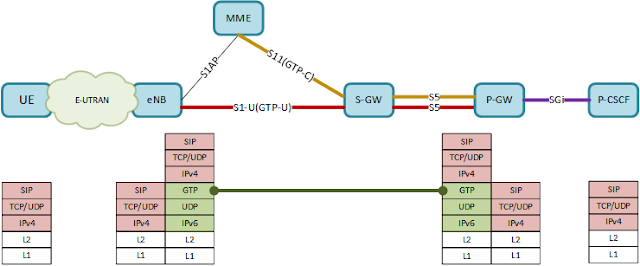Session & Bearer
From netmanias. In my understanding, - EPS session = PDN connection - An EPS session can have single or multiple EPS bearers - EPS bearer is transmission path between UE and P-GW to deliver user traffic (IP flows) with specficied QoS - An EPS bearer can have single or multiple IP flows 1 EPS Session IP connection between a UE and a PDN is called PDN connection or EPS session. Each PDN connection (or EPS session) is represented by an IP address of the UE and a PDN ID (in other words, Access Point Name (APN)). It has more than one EPS bearer to deliver user traffic (IP packets), and applies the service quality (QoS) policy obtained from a PCRF to the EPS bearers. The minimum fundamental bearer that an EPS session has for a PDN is called a default EPS bearer. 2. EPS Bearer A UE can have multiple EPS bearers concurrently. So, different EPS bearers are identified by their EPS bearer ID, which is allocated by an MME. EPS bearer actually is a concatenati...

